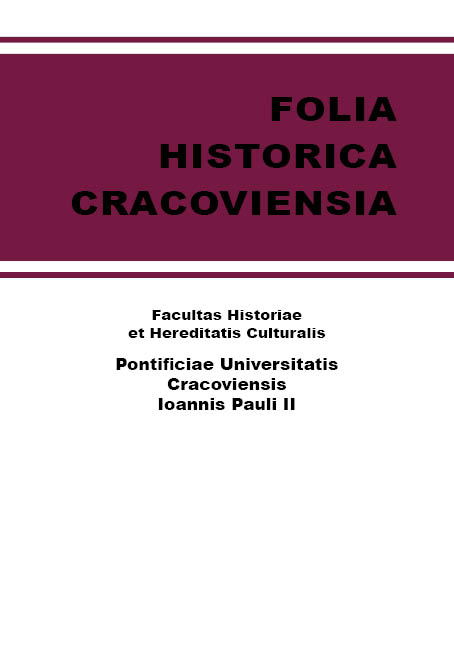Formy pobożności członków bractw religijnych w nowożytnym Krakowie
Forms of piety among members of religious confraternities in Krakow in the early modern period
Author(s): Andrzej BruździńskiSubject(s): History, Cultural history, History of ideas, Modern Age, 16th Century, 17th Century
Published by: Wydawnictwo Naukowe Uniwersytetu Papieskiego Jana Pawła II w Krakowie
Keywords: piety; religious confraternities; Krakow; Middle Ages; post-Trent epoch
Summary/Abstract: The author analyses forms of piety among Krakow religious confraternities, both those which originated already in the Middle Ages and those from the post-Trent epoch. There were dozens of confraternities in the early modern Krakow. The author was able to trace back 36 religious confraternities, active in as many as 51 communities. The article shows that almost every member of each stratum of the urban community, from the patriciate to the commoners, belonged to a religious confraternity of sorts. Confraternities had many functions, but the religious education of Krakow inhabitants was the most significant. In each subsection the author presents various forms of fraternal piety, namely: Christ-centric piety, pneumahagic piety, Marian piety, the worship of angles and saints, as well as the eschatological dimension. Towards the end, the article contains briefly characterises the charitable activities of religious confraternities. The author concludes that religious confraternities played an important role in building the Catholic awareness of the society, and the fraternal piety was indeed a basis and a catalyst of the growth of the city of Krakow. /Autor analizuje formy pobożności krakowskich bractw religijnych, zarówno tych, które powstały jeszcze w średniowieczu, jak i tych z epoki potrydenckiej. W nowożytnym Krakowie działało kilkadziesiąt bractw. Autorowi udało się potwierdzić źródłowo 36 religijnych konfraterni działających wówczas w 51 wspólnotach. Artykuł pokazuje, że niemal każdy członek poszczególnych warstw społeczności miejskiej, od bogatego patrycjatu poczynając, a na ubogim plebsie kończąc, należał do bractw religijnych. Bractwa miały wiele funkcji, jednak jedną z ważniejszych było wychowanie religijne społeczeństwa Krakowa. Autor w podrozdziałach przedstawia różne formy pobożności brackiej: pobożność chrystocentryczną, pobożność pneumahagijną, pobożność maryjną, kult aniołów i świętych, jak również jej wymiar eschatologiczny. W ostatniej części artykułu scharakteryzowana została także działalność charytatywna bractw religijnych. Na zakończenie autor dochodzi do konkluzji, że bractwa religijne odgrywały istotną rolę w budowie katolickiej świadomości społeczeństwa, natomiast sama pobożność bracka była niewątpliwie podłożem i katalizatorem rozwoju Krakowa.
Journal: Folia Historica Cracoviensia
- Issue Year: 21/2015
- Issue No: 1
- Page Range: 103-146
- Page Count: 44
- Language: English

